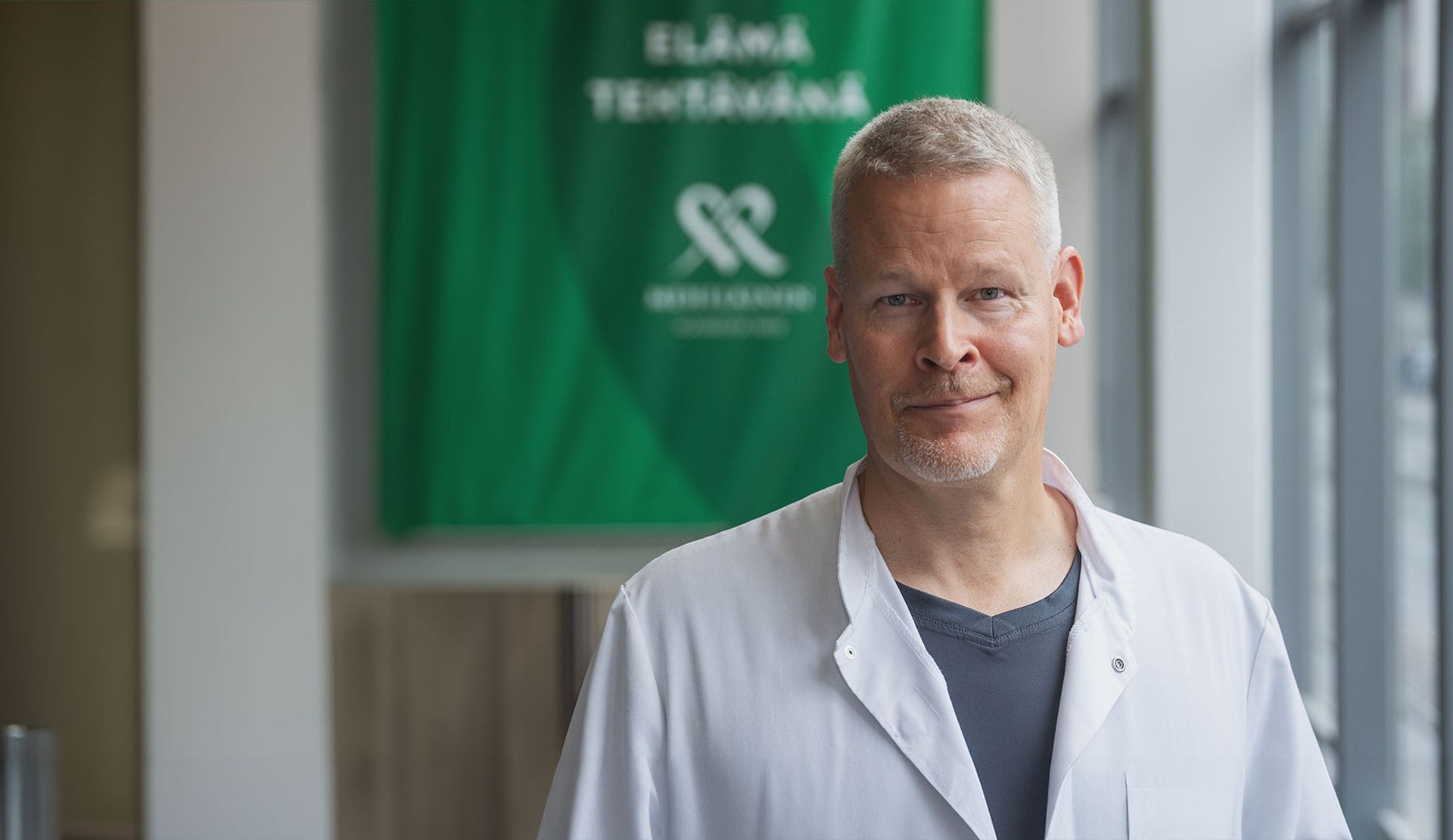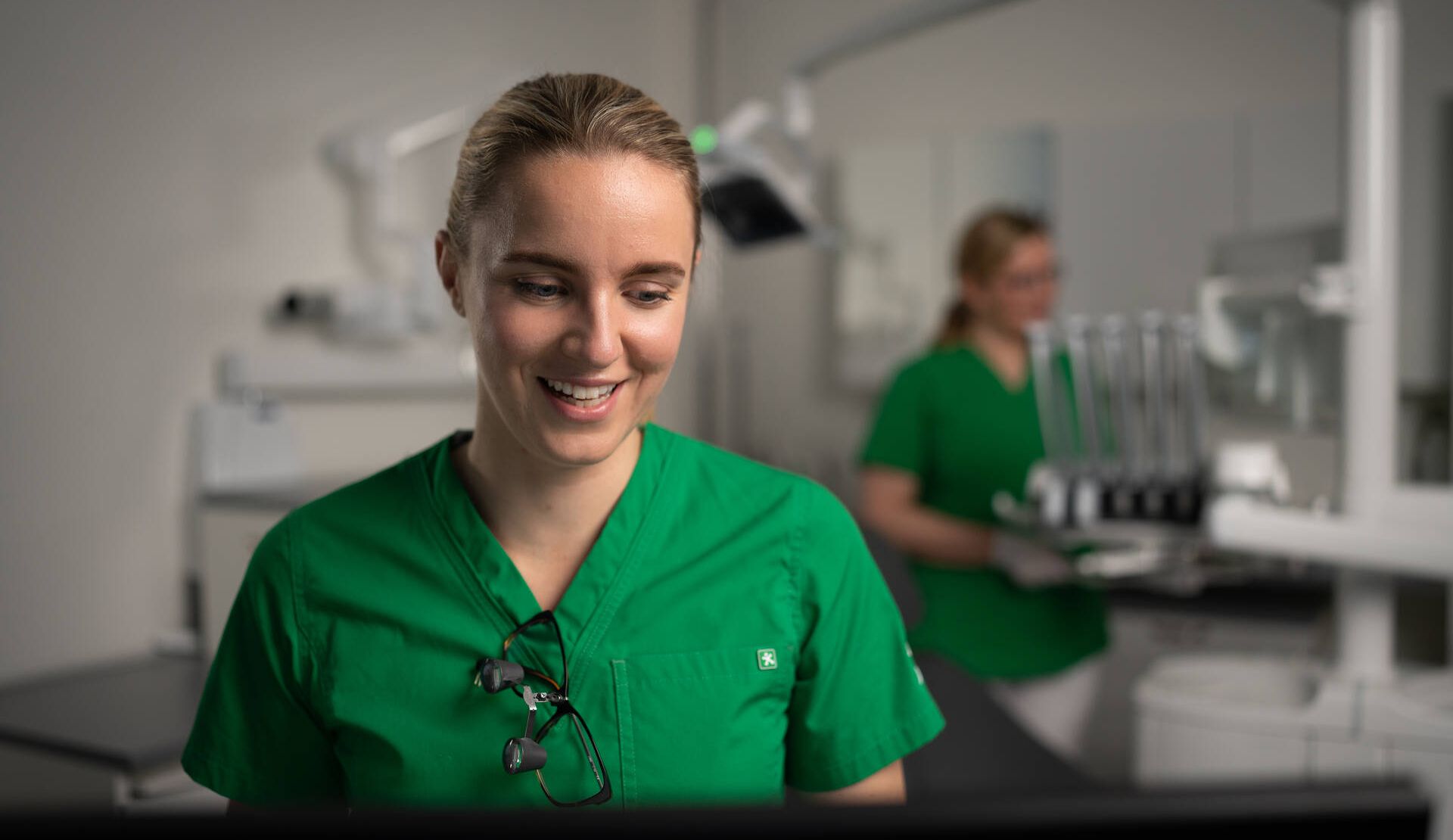
Prominent ear surgery
Overview of prominent ear surgery
- Prominent ear surgery is a safe and permanent solution that corrects protruding ears and restores the natural symmetry of the face.
- The procedure is performed as outpatient surgery under local anesthesia or general anesthesia, with a total hospital stay of approximately 4–5 hours.
- Preparation for the surgery involves an initial consultation with a plastic surgeon, during which the need for surgery is assessed and the procedure is planned.
- Surgery performed for aesthetic reasons is not eligible for Kela reimbursement.
About prominent ears
Prominent ears, or protruding auricles, are a common anatomical feature that occur in approximately five percent of the population. This is a congenital characteristic where the normal folds of the ear cartilage have not developed in the usual way. As a result, the upper part of the ear remains further away from the side of the head than usual.
The cause of prominent ears is typically the abnormal shaping of the ear cartilage during fetal development. The normal folds of the ear, particularly the so-called antihelix fold, may not have formed or may be less pronounced than usual. Additionally, the cup-shaped part of the ear may be larger than normal or positioned at an unusual angle. These structural differences lead to the protruding appearance of the ears.
Benefits of prominent ear surgery
Prominent ear surgery, also known as otoplasty, is a procedure used to correct the position or shape of the ear when the ears protrude significantly. The surgery helps alleviate appearance-related concerns and is a common, proven safe procedure performed on both children and adults. During the procedure, the position of the ear is adjusted closer to the head, and its shape can be refined to appear more natural.
Prominent ear surgery is an effective solution for correcting protruding ears. The goal of the procedure is to bring facial features into better balance, which can positively impact body image and boost self-esteem. The surgery can be particularly beneficial when the appearance of the ears causes embarrassment or social discomfort.
Prominent ear surgery can help in the following situations:
- The ears protrude more than 30 degrees from the side of the head.
- The structure of the ear is deformed.
- The appearance of the ears causes social discomfort or bullying.
- Asymmetry of the ears disrupts the overall appearance.
- Self-esteem is affected due to the appearance of the ears.
Preparing for prominent ear surgery
- Consultation. The first step is a consultation with a plastic surgeon, during which your general health, underlying conditions, and previous surgeries are discussed. The initial discussion also covers your wishes, expectations, and potential risks.
- Medications and allergies. During the initial consultation, it is important to mention any medications you are taking and any allergies you may have. Certain medications should be avoided before surgery. For example, aspirin and other blood-thinning medications should be discontinued two weeks prior to the procedure to minimize the risk of bleeding.
- Anatomical assessment. During the consultation, the plastic surgeon will evaluate the size and shape of the ears and examine their symmetry. The structure and flexibility of the ear cartilage will also be assessed, and the angle of the ears in relation to the head will be measured.
- Lifestyle. Smoking should be stopped at least one month before the procedure, as it impairs blood circulation and slows wound healing. Alcohol consumption should be avoided for one week before surgery. A healthy diet and adequate hydration support recovery after the procedure.
- Hair washing. Wash your hair thoroughly the day before the surgery, but do not use hair care products.
- Jewelry. Remove all jewelry before coming in for the surgery.
- Skin products. Do not use makeup, facial creams, or other skin products on the day of the surgery.
- Pain medication and clothing. It is a good idea to have pain medication and comfortable, front-buttoned clothing ready at home for the recovery period.
- Escort. You will need an escort on the day of the surgery, as you will not be allowed to drive after the procedure.
- Preparation instructions. Detailed preparation instructions will be provided before the surgery. These will include information about possible changes to medications, fasting requirements, hygiene, and whether an escort is needed.
How prominent ear surgery proceeds
On the morning of the surgery, you must fast according to the doctor’s instructions, typically six hours before the procedure. If you are taking medications that are allowed before the procedure, they should be taken with only a small amount of water as directed by the doctor.
Prominent ear surgery is usually performed as an outpatient procedure under local anesthesia or, for children, under light general anesthesia. The surgeon makes an incision behind the ear, ensuring the scar remains hidden.
The ear cartilage is reshaped, and any excess cartilage is removed if necessary. The ear is secured closer to the head with permanent sutures.
The incision is closed, and a supportive bandage is placed around the ear.
The surgery typically lasts 1–2 hours, and recovery in the post-operative room usually takes about an hour. You can return home the same day.
Recovery from prominent ear surgery
- Bandage. After the surgery, a firm bandage is placed around the ears to protect them and keep them in the correct position. This initial bandage is kept in place for two days, after which it can be removed during the first shower. Adult patients can remove the bandage themselves at home, but for child patients, the bandage is usually removed during a follow-up visit.
- Pain management. Post-operative pain is generally mild and can be effectively managed with standard pain relievers.
- Sutures and surgical scars. Sutures are typically removed one week after the surgery. Although the surgical scars remain hidden, it is important to take good care of them. Scars mature into their final form within approximately one year. After the initial bandage is removed, a lighter support band is worn at night for at least one month. This is crucial to ensure the final result, as the ear cartilage tends to return to its original position.
- Swelling. Tenderness, swelling, and bruising around the ears may occur during the first few weeks. Swelling is most pronounced 3–4 days after the surgery and then gradually subsides. Sleeping in an elevated position during the first few weeks helps reduce swelling.
- Physical activity. Physical exertion, especially contact sports, should be avoided for 3–4 weeks.
- Sauna. Sauna use should be avoided for 3–4 weeks.
- Sick leave. Recovery from prominent ear surgery typically takes 1–2 weeks. Light work or school can usually be resumed about one week after the surgery.
- Contacting a doctor. If severe pain, signs of infection, or other concerning symptoms occur, it is important to contact a doctor.
Other related services
Body and breasts
Comprehensive and expert plastic surgery for the body and breasts.
Consultation with a plastic surgery nurse
A free consultation helps you find the right treatment options.
Face and eyelids
We provide personalized solutions for the aesthetic needs of your face and eyelids.
Nose and ears
Enhance the shape and structure of your nose or ears with the expertise of a plastic surgeon.
Plastic surgeon
A specialist in plastic surgery performs treatments and surgeries to enhance the appearance and functionality of the face and body.
Skin lesions and moles
Treat skin lesions and remove moles safely and discreetly.
Frequently asked questions about prominent ear surgery
Prominent ears are usually caused by the structure of the ear cartilage and its attachment angle to the skull. If the ear cartilage is weak or the upper part of the ear folds less, the ear may protrude outward. This is a completely normal anatomical feature that does not affect hearing or health. Prominent ears may be noticeable from birth or become more pronounced as the child grows.
Yes, prominent ears can be hereditary. It often runs in families and is caused by genetic factors that influence the shape and attachment of the ear cartilage. If parents or close relatives have prominent ears, it is more likely that the child will have a similar feature. However, heredity is not the only factor, as individual differences can also affect appearance.
The procedure involves reshaping the ear cartilage and bringing the ear closer to the head, aligning it more naturally with the facial contours.
The surgery corrects the position of protruding ears and enhances facial symmetry. The procedure can significantly boost self-esteem and reduce social discomfort related to appearance. The incision is made behind the ear, making the scar very discreet.
Two main techniques are used in prominent ear surgery, and the choice depends on the structure of the ear and the degree of protrusion.
The first technique is cartilage reshaping, where a discreet incision is made behind the ear. The cartilage is then softened and shaped using fine sutures. This method is particularly suitable for milder cases and allows for a natural result, but it requires precise technique.
The second technique is cartilage modification and fixation, which is used in more severe cases. In this method, the cartilage may be thinned or removed if necessary, and the ear is secured closer to the head with permanent sutures. This technique enables more significant correction.
The surgery is suitable for both children and adults. For children, the procedure is typically performed around school age, once the ear has reached its adult size. When considering surgery, the need and suitability are always assessed on an individual basis.


